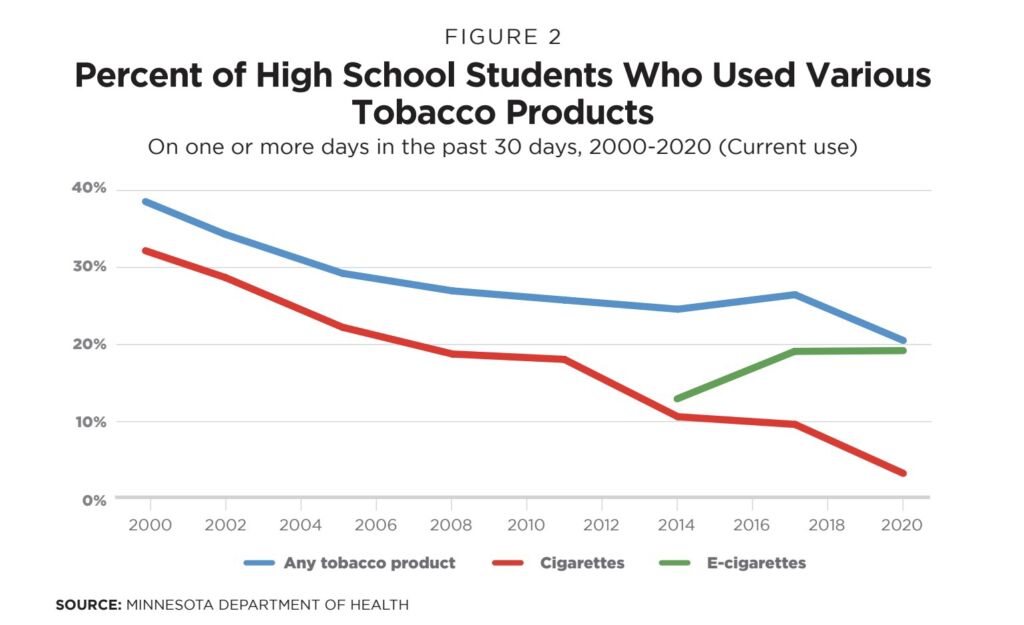FDA’s decision to ban e-cigarettes could harm MN youth
Minnesota has made great strides in smoking reduction, especially among youth. Between 2000 and 2020, for example, cigarette use declined by 90.1 percent among high school students and 78.0 percent among middle school students. Similarly, the number of middle and high school students getting into smoking significantly declined in that same period.

This is in large part because of education and awareness of the harmful effects of tobacco smoking. But the introduction of e-cigarettes has also played a huge role in reducing smoking among youth.
According to research evidence, e-cigarettes and traditional combustible cigarettes are substitutes. The introduction of e-cigarettes has led many youth to switch to e-cigarettes instead of smoking cigarettes. In fact, e-cigarette use and cigarette smoking have gone in opposite directions among youth in Minnesota. While e-cigarette use has gone up in Minnesota, cigarette smoking has gone down. And even after accounting for the increased use of e-cigarettes, tobacco use is still down compared to the past.

The FDA is misguided
E-cigarettes do not contain the same toxic chemicals found in cigarettes. For this reason, they are significantly less harmful than traditional cigarettes. According to some research, e-cigarettes are 95 percent less harmful than traditional cigarettes. So, the rise in e-cigarette use is not necessarily an alarming trend. The youth are choosing less harmful tobacco products.
This is why the FDA’s decision to ban e-cigarettes is concerning. According to a study conducted in 2021, when San Francisco banned flavored tobacco — including e-cigarettes — smoking doubled. And when Minnesota increased its tax on e-cigarettes, cigarette smoking went up among adults.
Banning e-cigarettes will push MN youth into smoking
Less youth are smoking cigarettes today in Minnesota than in the past. And that is partly due to the introduction of e-cigarettes. The FDA’s decision to ban e-cigarettes would push more young people into smoking cigarettes, which are significantly more harmful, undoing years of progress that Minnesota has made in reducing smoking among the youth.